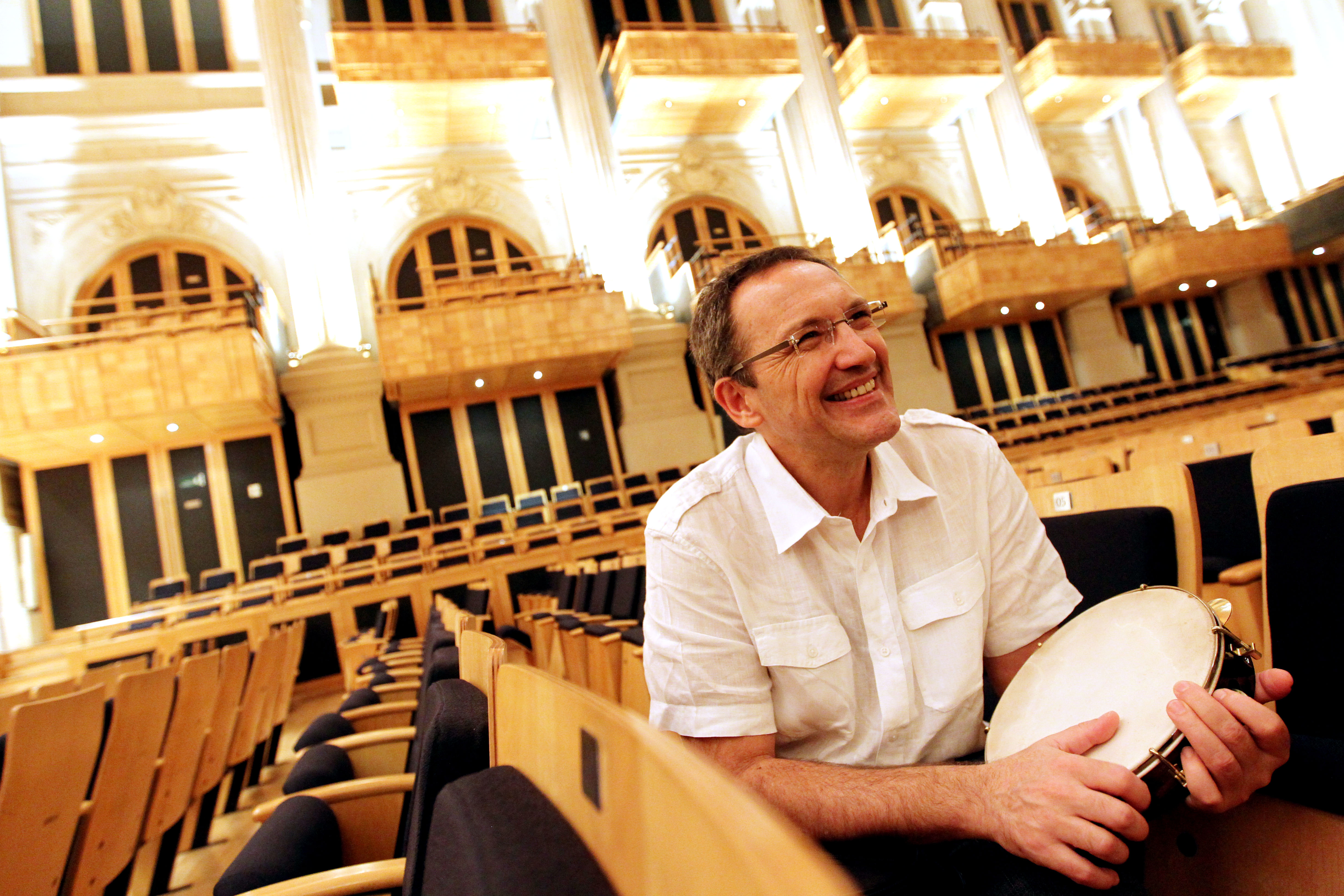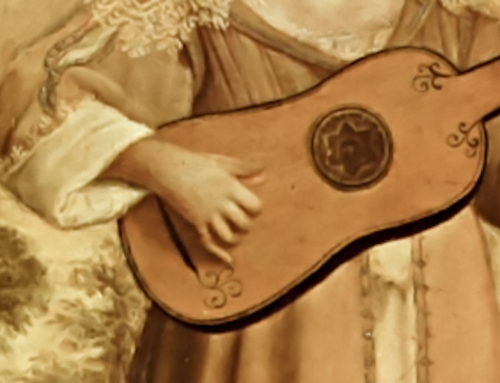As the Minnesota Orchestra prepares to perform composer Osvaldo Golijov’s astonishing La Pasión según San Marcos (The Passion According to St. Mark), conductor Ahmed Anzaldúa writes about the power and genius of this work that he considers “one of humanity’s greatest musical achievements.” Anzaldúa, who is founder and conductor of the choir Border CrosSing, will prepare the choruses for the Orchestra’s August 2 and 3 performances of the epic work.
By Ahmed Anzaldúa
I have loved Osvaldo Golijov’s La Pasión según San Marcos since it was premiered. It speaks to me as a Latinx. It speaks to me having grown up in a Muslim family in Mexico, primarily a Catholic country. It speaks to my love of both Bach and Celia Cruz. It has spoken especially loudly to me in recent years, feeling especially relevant to my experience as a Mexican-Egyptian immigrant in the United States. In 2017, when we presented our first concert with Border CrosSing, our final work on the program was the movement Demos Gracias from La Pasión, a piece entirely about the courage and resilience of the Latin American people in the face of adversity. I have known and loved La Pasión for nearly 20 years and it has never felt more relevant to me than it does today.
La Pasión was commissioned by the Bach Academy of Stuttgart in 2000 together with Passion settings by Wolfgang Rihm, Tan Dun, and Sofia Gubaidulina to commemorate both the millennium and the 250th anniversary of the death of Johann Sebastian Bach. This posed a conundrum for Golijov, who initially refused the commission on the ground that Passions are meant to be Christian compositions while he himself was Jewish. Of the four commissioned Passion settings, Golijov’s was the most surprising. When first faced with the piece, Rilling himself asked Golijov if “it was a Passion.” This work is strikingly original and manages to be a true record of Christianity, of Latin American history, and of the power of music to convey universal truths. The premiere received a 25-minute standing ovation and it has rightly been hailed as the first great composition of the 21st century.
Passion as Ritual
The text of La Pasión is almost entirely drawn from the Bible’s Gospel of Mark. Golijov uses 11 different Spanish translations of the Gospel and the Psalms in this work, ranging from translations with scholarly language to those in more popular styles, and much of the Spanish pronunciation is an Africanized dialect. There are other texts interspersed in the work, including the surprising use of the Mourner’s Kaddish as the final movement of the work.
La Pasión tells the story of the last days on earth of Jesus and his crucifixion in the way that it is not only told but lived every day in Latin America. Unlike musical settings in the European Lutheran tradition, which involve the Evangelist telling the Gospel story followed by commentary and reflection, La Pasión is primarily a ritual. This work is a reenactment of the Passion story, reflecting how it is often experienced in Latin American church traditions (in this respect, La Pasión has more in common with the Passions of the Middle Ages than with those of the 17th and 18th centuries). This approach gives this work an immediacy and humanity that is unmatched. Golijov finds specific strands that run through the Gospel of Mark: betrayal, courage, sentencing, mockery, insult, purity; these are powerful dramatic elements that are each closely connected to specific music genres throughout the piece.
A “ceviche orchestration”
There are several elements of the instrumentation that immediately stand out: the unconventional use of the accordion, the brass of a salsa band, a Latin jazz rhythm section, the berimbau necessary for capoeira, the extraordinarily large and varied percussion section. Golijov has mentioned that in this work he uses a ceviche orchestration. Ceviche, a quintessential Latin American dish of seafood and lemon, is cooked with acid rather than with fire. In La Pasión, he eliminates all the warm, mellowing elements of the orchestra: there are no flutes or woodwinds, no French horns, no violas; the orchestration reflects the “burn” of the lemon, so central to Latin American taste. Like in ceviche, every disparate element in La Pasión remains raw, retaining its full expressive powers, adding to each other.
The voices are also treated in a unique way. While there are moments where the voices sing in a way connected to the familiar choral singing traditions of Great Britain, Germany, or Scandinavia, there are many moments where the singers must channel less familiar vocal tone and technique, doing this while navigating an extraordinarily difficult score that places great demands on singers’ musicianship and technique. One movement requires the purity and legato of plainchant, the next demands extended techniques rarely seen outside of the most dissonant avant garde, followed by a mambo chorus in close harmony…
Sharing truths about human nature, emotion and suffering
Certain works seem to belong to certain performers. Since it was conceived, there is no question that La Pasión belongs to conductor María Guinand and her ensemble, La Schola Cantorum de Venezuela. This is their piece and they are its performers. I am still incredulous that I have the honor of preparing this work for Guinand to conduct, with a chorus in Minnesota of all places! It is difficult to describe what La Pasión means to me; while it has moments of great excitement and beauty, these are not the adjectives that I would use to describe it. Golijov writes:
“I want to record—like Rembrandt recorded the Jews, I want to record the Christians, simply that. For instance, my great grandmother had a picture of ‘Jeremiah Lamenting the Fall of Jerusalem’ by Rembrandt—it’s the greatest Jewish picture ever, and he was not a Jew, but he lived amongst them—I cannot aspire to be Rembrandt but if at least one section of the Passion has the truth about Christianity that Rembrandt’s paintings have about Judaism, I’ll be all right—that’s enough.”
While my household was Muslim, my Mexican grandparents were devout Catholics, and I have vivid memories of listening to them getting up every single day at the crack of dawn to pray the Rosary together. They did not have an easy life, and yet their faith never wavered. I hear the truth of their Christian faith contained in La Pasión. In this piece I hear the truth of the painful history of slavery and colonization that is contained in the festive beats of the clave and the tresillo rhythm, so essential to nearly every Latin American popular music genre. There is truth about human nature, emotion, suffering, and history in La Pasión. I consider this piece one of humanity’s greatest musical achievements.
Ahmed Anzaldúa is a Mexican choral conductor, classical pianist, and music educator of Egyptian descent. He is an active musician, performing in Mexico and the United States frequently as a soloist and conductor with choirs, orchestras, in recitals, and as a collaborative pianist. He lives in Minneapolis and is the director and founder of Border CrosSing, an organization dedicated to integrating historically-segregated audiences, repertoire, and musicians through the performance of choral music. He is also a co-editor of the Justice Choir songbook and beginning in August 2019 will be Director of Music Ministries at Unity Church – Unitarian in Saint Paul.




